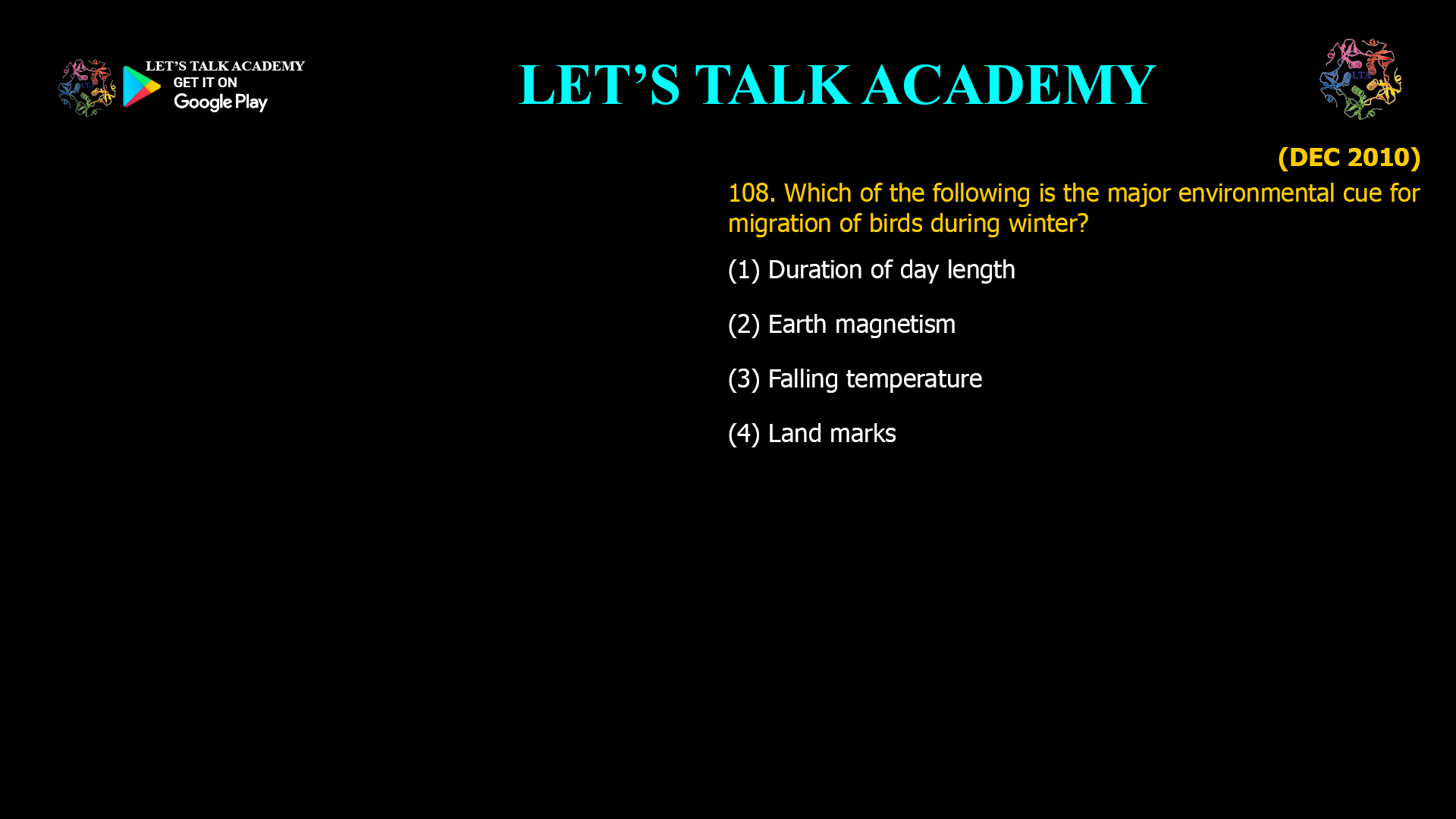- Which of the following is the major environmental cue for migration of birds during winter?
(1) Duration of day length
(2) Earth magnetism
(3) Falling temperature
(4) Land marksThe Science Behind Bird Migration Timing
Birds rely on a combination of internal biological clocks and external environmental cues to know when to migrate. Among these cues, day length is the most reliable and consistent signal. As days grow shorter in late summer and autumn, birds experience physiological changes triggered by this decreasing daylight. These changes include the release of hormones that prepare their bodies for long journeys, such as building up fat reserves and increasing migratory restlessness (known as zugunruhe).
Why Day Length is the Primary Cue
-
Predictability: Unlike temperature or food availability, which can fluctuate unpredictably from year to year, the change in day length is consistent and tied to the Earth’s orbit around the sun. This makes it a dependable signal for birds to synchronize their migration.
-
Hormonal Triggers: The shortening of daylight hours stimulates glands in the bird’s body to release hormones that initiate migratory behavior and physiological preparations for the journey.
-
Universality: Nearly all migratory bird species use photoperiod as a primary cue, regardless of their migratory distance or destination.
Other Environmental Cues
While birds also use cues such as temperature changes, food availability, and even earth magnetism or landmarks for navigation, these factors primarily influence the route and direction of migration rather than the timing of departure. Temperature and food can act as secondary or modifying cues, especially in fine-tuning the exact timing within a season, but they do not provide the same level of predictability as day length.
How Birds Respond to Day Length
As the days shorten:
-
Birds experience increased restlessness and fattening.
-
Hormonal changes prepare them for flight and long-distance travel.
-
The urge to migrate becomes overwhelming, even in captive birds kept indoors with changing light cycles.
Conclusion
The major environmental cue for the migration of birds during winter is the duration of day length (photoperiod). This reliable signal ensures that birds begin their journeys at the optimal time, maximizing their chances of survival and reproductive success.
Correct answer: (1) Duration of day length
-




1 Comment
Kajal
October 12, 2025Day’s duration